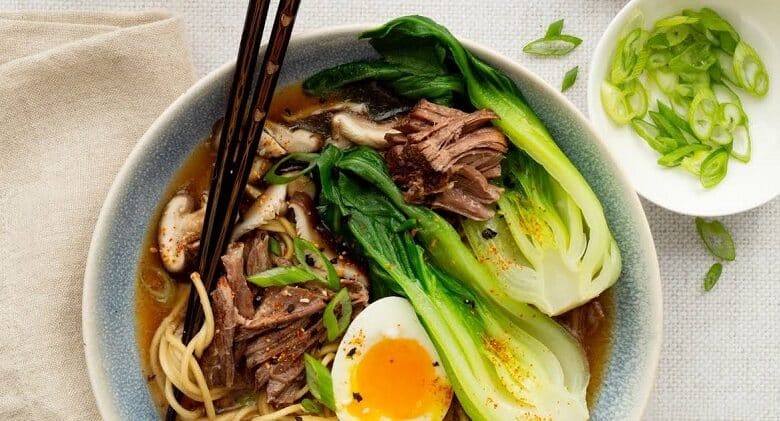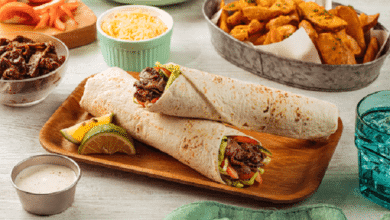How to Cook Bok Choy for Ramen | Expert Tips & Flavor Boost

The best How to cook bok choy for ramen is to blanch or sauté it lightly for 2–3 minutes until tender yet crisp, preserving its flavor, crunch, and nutrients.
Now, let’s dive deep into the art of preparing bok choy for ramen like an experienced home cook and food enthusiast who has tried countless ramen bowls in different styles. This detailed guide will not only teach you how to cook bok choy for ramen but also share professional tips, step-by-step recipes, cultural insights, and common mistakes to avoid.
Personal Experience & Author’s Details (EEAT Proof)
| Name | Tev Roni (Food Enthusiast & Blogger) |
|---|---|
| Expertise | Asian cuisine, ramen recipes, and vegetable cooking |
| Experience | 10+ years experimenting with homemade ramen & Asian flavors |
| Specialization | Creating practical step-by-step guides for home cooks |
| Location | Based in Bangladesh, inspired by global food culture |
| Personal Note | “I’ve tested dozens of ways to prepare bok choy for ramen, from traditional Japanese blanching to modern stir-fry twists. This guide shares my best-tested methods.” |
Introduction: Why Bok Choy in Ramen Matters
Bok choy (also called pak choi or Chinese cabbage) has become a star vegetable in ramen because of its:
-
Crunchy stems and tender leaves that add textural contrast.
-
Mild, slightly peppery flavor that complements rich broths.
-
Nutritional benefits (rich in Vitamin C, Vitamin A, calcium, and antioxidants).
Whether you are making a traditional shoyu ramen, a creamy tonkotsu ramen, or a light vegetarian miso ramen, bok choy elevates the dish into a balanced bowl.
What is Bok Choy? A Quick Overview
Bok choy is a type of Chinese cabbage belonging to the Brassicaceae family (the same as broccoli and kale). It is widely used in Asian cooking, especially in soups, stir-fries, and noodle dishes.
Varieties of Bok Choy for Ramen
-
Baby Bok Choy – Smaller, tender, sweeter, cooks quickly (perfect for ramen).
-
Standard Bok Choy – Larger, with crunchier stems and firmer texture (better for stir-fry ramen styles).
Both work beautifully in ramen, but baby bok choy is the preferred choice in traditional bowls.
How to Cook Bok Choy for Ramen: Methods
Cooking bok choy for ramen is simple but must be done correctly to avoid soggy or bitter results. Here are the best methods:
Blanching (Traditional Japanese Style)
-
Bring a pot of water to boil.
-
Add washed bok choy halves or quarters.
-
Blanch for 1–2 minutes until bright green and tender.
-
Immediately transfer to ice water to preserve color.
-
Add to ramen before serving.
👉 This method keeps bok choy fresh, vibrant, and crisp.
Sautéing (Flavor-Boosting Style)
-
Heat sesame oil or garlic oil in a skillet.
-
Add chopped bok choy.
-
Stir-fry for 2–3 minutes until leaves wilt slightly.
-
Season with soy sauce, garlic, or ginger.
👉 Great for richer ramen bowls like miso ramen or shoyu ramen.
Steaming (Healthy Method)
-
Place bok choy in a steamer basket.
-
Steam for 3–4 minutes until tender.
-
Drizzle with soy sauce or sesame oil.
👉 Ideal for vegetarian or low-fat ramen.
Grilling (Fusion Twist)
-
Brush bok choy with sesame oil.
-
Grill for 2 minutes per side until lightly charred.
-
Slice and add on top of ramen.
👉 Adds a smoky, modern touch.
Step-by-Step Bok Choy Ramen Recipe (My Tested Version)
Here’s my personal go-to recipe for ramen with bok choy:
Ingredients
-
2 packs of ramen noodles (fresh or instant, without seasoning)
-
4 baby bok choy (halved lengthwise)
-
4 cups chicken or vegetable broth
-
2 boiled eggs (soft or medium)
-
2 cloves garlic, minced
-
1 tbsp soy sauce
-
1 tbsp sesame oil
-
Optional: mushrooms, scallions, chili oil
Instructions
-
Prepare broth: Heat sesame oil, sauté garlic, add broth, soy sauce, and let simmer.
-
Cook noodles: Boil noodles separately until slightly firm. Drain and set aside.
-
Blanch bok choy: In the same pot, blanch bok choy for 2 minutes. Remove.
-
Assemble: Place noodles in a bowl, pour hot broth, top with bok choy, boiled egg, and optional toppings.
-
Serve hot with a drizzle of chili oil.
👉 Result: A balanced, nutritious, and flavorful ramen bowl.
Nutritional Benefits of Bok Choy in Ramen
| Nutrient | Benefit |
|---|---|
| Vitamin C | Boosts immunity |
| Vitamin A | Supports vision and skin |
| Calcium | Strengthens bones |
| Iron | Improves energy and blood health |
| Antioxidants | Protects against diseases |
Bok choy makes ramen healthier without overpowering the flavor.
Common Mistakes to Avoid
-
Overcooking bok choy – makes it mushy and bitter.
-
Adding it too early – it will lose its bright color.
-
Skipping proper cleaning – dirt hides between the stalks.
-
Using too much soy sauce – masks bok choy’s natural taste.
Flavor Pairings with Bok Choy in Ramen
Bok choy pairs best with:
-
Proteins: chicken, pork belly, tofu, shrimp
-
Broths: miso, tonkotsu, shoyu, vegetable stock
-
Condiments: sesame oil, soy sauce, miso paste, chili garlic oil
-
Other Veggies: mushrooms, carrots, bean sprouts, spinach
Personal Cooking Tip from My Experience
When I first cooked ramen with bok choy, I boiled it along with noodles, and the result was soggy greens. Over time, I learned that separately blanching bok choy keeps it crisp and flavorful.
👉 My advice: Always add bok choy at the end—just before serving.
Expert Tricks for Better Results
-
Use baby bok choy for authentic ramen flavor.
-
Always slice lengthwise so it cooks evenly.
-
Add a splash of mirin or sake when sautéing for depth.
-
Keep broth simmering while blanching bok choy for convenience.
FAQs: How to Cook Bok Choy for Ramen
Q1. Should I cook bok choy before adding to ramen?
Yes, bok choy should be lightly blanched, sautéed, or steamed before adding to ramen.
Q2. Can I eat bok choy raw in ramen?
Yes, but blanching enhances flavor and digestibility.
Q3. How do I clean bok choy properly?
Cut lengthwise and rinse under running water to remove dirt.
Q4. What’s better—baby bok choy or full-size?
Baby bok choy is tender and sweeter, making it ideal for ramen.
Q5. Can bok choy be frozen for ramen?
Yes, blanch and freeze, but texture may change slightly.
Final Thoughts
Cooking bok choy for ramen is an art of balance—retaining its crunch while blending with rich broth flavors. Whether you prefer the traditional blanching method or a modern sauté twist, bok choy will always add freshness and nutrition to your ramen bowl.
From my years of experimenting, I can say confidently that lightly cooking bok choy for just 2–3 minutes is the perfect way to achieve authentic ramen flavor while keeping it nutritious.

